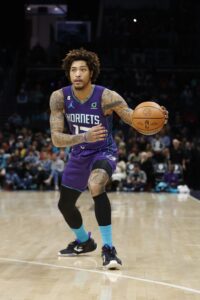In order to claim a player off waivers, an NBA team must be able to fit the player’s current-year salary into either cap room, a traded player exception, or – if the player is in the final year of his contract – a disabled player exception.
This rule doesn’t apply if the waived player is on a one- or two-year minimum-salary contract. In that case, any team can claim him using the minimum salary exception.
Waiver claims aren’t particularly common in the NBA, and claims involving players earning more than the minimum salary are even less frequent. Still, it’s worth knowing which teams have the most flexibility to make waiver claims in case an intriguing player on a reasonable contract hits the wire.
On Monday, for instance, the Spurs waived veteran point guard Cameron Payne, who is on an expiring $6.5MM deal. Payne has played well in Phoenix over the last four seasons, averaging 9.8 points and 4.2 assists in 20.2 minutes per game across 174 appearances, with a .434/.384/.833 shooting line. That’s pretty solid production for the price.
In all likelihood, Payne will pass through waivers unclaimed and sign for less than $6.5MM with a new team, but there will be teams around the NBA that at least consider making a claim. The Grizzlies should be one of them, in the view of John Hollinger of The Athletic (Twitter link), who notes that Memphis could use another point guard and has a trade exception large enough for the team to take on Payne’s salary without getting too close to the tax line.
Memphis is one of nine teams with the ability to claim Payne off waivers. Here’s the full list, along with the value of their biggest trade exception (unless otherwise noted):
- Atlanta Hawks: $23,019,560
- Brooklyn Nets: $19,928,571
- Washington Wizards: $12,354,400
- Chicago Bulls: $10,232,559
- Note: This is the amount of the Bulls’ disabled player exception, not a trade exception, so the team could only use it to claim a player on an expiring contract.
- Miami Heat: $9,450,000
- Portland Trail Blazers: $8,300,000
- Indiana Pacers: $7,493,593
- Note: This is the maximum amount of cap room the Pacers could create by renouncing the cap holds for their remaining free agents.
- Memphis Grizzlies: $7,492,540
- New York Knicks: $6,803,012
Many of these teams wouldn’t have interest in a point guard like Payne and wouldn’t necessarily be in position to add another $6.5MM in salary to their books. Claiming Payne would put the Bulls into luxury tax territory, for instance. These are simply the clubs capable of placing a claim if they so choose.
A total of 10 other teams have the ability to claim non-minimum players off waivers, but wouldn’t be able to take on Payne specifically:
- Phoenix Suns: $6,500,000
- Note: The Suns’ trade exception is technically large enough to take on Payne, but they’re ineligible to claim him after trading him to San Antonio.
- Boston Celtics: $6,202,500
- Orlando Magic: $5,056,771
- Note: This is the maximum amount of cap room the Magic could create by renouncing the cap holds for their remaining free agents.
- Dallas Mavericks: $4,953,980
- Minnesota Timberwolves: $3,688,117
- Los Angeles Lakers: $2,700,000
- Philadelphia 76ers: $2,448,846
- Golden State Warriors: $2,337,720
- Denver Nuggets: $2,201,520
- Charlotte Hornets: $1,930,681
Even though the Hornets‘ largest trade exception is less than the minimum salary for a two-year veteran ($2,019,706), it could still come in handy for claiming certain younger players on non-minimum deals.
For example, if the Thunder – facing a roster crunch – were to waive Jeremiah Robinson-Earl, who is earning $1.9MM in the third year of a four-year contract, Charlotte would be able to claim him using its trade exception. A club with only the minimum salary exception available wouldn’t be in position to place a claim on Robinson-Earl.
Here are the 11 teams without a TPE, DPE, or cap room available to claim a player earning more than the minimum:
- Cleveland Cavaliers
- Detroit Pistons
- Houston Rockets
- Los Angeles Clippers
- Milwaukee Bucks
- New Orleans Pelicans
- Oklahoma City Thunder
- Toronto Raptors
- Sacramento Kings
- San Antonio Spurs
- Utah Jazz
 The 15th pick of the 2015 draft, Oubre has earned at least $12MM in each of the past four seasons. He averaged a career-high 20.3 points in 48 appearances with the Hornets last season while snatching 5.2 rebounds and 1.4 steals per game.
The 15th pick of the 2015 draft, Oubre has earned at least $12MM in each of the past four seasons. He averaged a career-high 20.3 points in 48 appearances with the Hornets last season while snatching 5.2 rebounds and 1.4 steals per game.